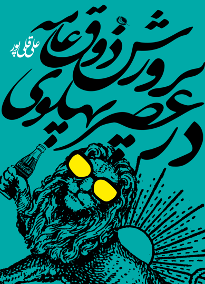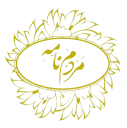Cultivation of Popular Taste: Aesthetic Education of Nation in Cultural Policy-Making of the State. (Parvaresh-e Zowq-e Amme Dar Asr-e Pahlavi) / Reviewed By Pouya Nekouei. Ph.D. student (Middle Eastern History), Department of Middle Eastern Studies, University of Texas, Austin, TX, USA.

Cultivation of Popular Taste is a cutting-edge work in Persian on the history of art and culture in Iran during the Pahlavi era. The book deals with the discourse and intellectual history of popular taste as well as policy-making concerning art and culture. The significance of this pioneering study lies in the broader context of historiographies of art and culture, as well as the question of knowledge production in Iran. Histories of art and culture have long been subjected to the aesthetic realm within Iranian universities and academia. This mode of thinking still looms large in academic disciplines studying art and culture in Iranian universities.
The dominant aesthetic lens of scholarly practices and writing has not left enough space for critical, discursive, and historically situated accounts of art and culture in modern Iran. Qolipur's work is the first comprehensive attempt in the Persian writing circles to depart from the mentioned mode of analysis.
Chapter one briefly situates the concept of taste in the post-constitutional era, mainly during Reza Shah. In this chapter, Qolipur looks into the writings of influential Iranian intellectuals and writers such as Mohammad-Ali Foruqi and Qolam-Reza Rashid-Yasami. He shows how the idea of 'education of nation' became a point of engagement for Iranian intellectuals at this time. In this chapter, he also provides an overview of a few existing institutions at this time, responsible for cultural policies during Reza Shah's reign, including Anjoman-e Asar-e Melli (the National Heritage Association) and Sazman-e Parvaresh-e Afkar (the Society for Cultivation of Thought). Qolipur shows that the concept of taste and institutions in charge of its cultivation was rooted in the idea of 'education of people' and the ideology of Iran-e Novin (new Iran) during Reza Shah.
Chapter two details the question of taste and developments in cultural policies and practices after Reza Shah abdicates from power. The chapter titled Salhā-ye Bi Dolati-ye Honar (The Years of Art's lack of Government) indicates how the policy-making vis-a-vis art had not yet found a significant organization in charge. Qolipur looks at various cultural figures, activists, and artists who emerged after Reza Shah abdicated from power and played a significant role in the public life of art during the 1940s.
During this period, newspapers and cultural centers, chiefly theaters, flourished; heated debates about the concept of tude (masses) concerning art and culture ensued, and the concepts of people and taste became subject to intellectual reflection in the public realm. In the late 1940s, as he shows, intellectuals of Reza Shah's reign were gradually replaced by a new emerging class of policy-makers and technocrats who changed the nature of debates on art and culture.
Chapter three discusses these changes and cultural policies from the early 1950s and the years following the so-called white revolution in the early 1960s. It is from this decade that, according to Qolipur, art and culture officially gained a centralized state organization in charge of them, i.e., the Ministry of Culture and Art.
Chapter four focuses on another critical factor in the history of art and culture in modern Iran: the influence of the rise in oil revenues and its impact on the discourse of cultivation of taste during the 1960s through the early 1970s. The author shows how in the fourth development planning of the late 1960s and early 1970s, the budget for art was separated from culture due to a surge in the country's revenue. Two more significant developments occurred: first, the emergence of the state's ideology, Pahlavism, intended to situate Iran on par with the West and in distinction with ideologies of socialism and nationalism in Iran.
The author shows that despite this ideological investment by the state, yet another cultural trend flourished; this second trend consisted of intellectuals and technocrats, who relied on the state's revenues to promote their own ostensibly elitist cultural agendas. The foundation of various cultural and art institutions, as well as festivals, were the result of this economic change in Iran.
Chapter five discusses popular Iranian film industry prior to the revolution, known as film farsi and the question of popular taste. This is an essential chapter in the book, for a while, popular Iranian cinema – at least in Persian writings - for a long time has been associated with the Other of art cinema; Qolipur relies on it as a historical space for his narrative of the history of taste during the Pahlavi era.
He masterfully delineates how popular cinema and popular tastes became the site of contestation for critics who increasingly considered the film industry 'degenerate'. The notion of ebtezal (degeneration) gained currency in the writings of critics such as Toqrol Afshar, Farrokh Qaffari, and Hushang Kavusi, in whose writings the question of "aesthetic education" of the masses resonated significantly.
The final chapter examines theater's relationship with cultural policies during the late Pahlavi era. Qolipur's attempt in this chapter is to show how the state accepted certain forms of popular theaters and therefore found their ways in cultural policy-making, while others remained external. He makes a valuable contribution to problems in the historiography of theater that has valuable ramifications for other disciplines of art studies too.
According to him, only those popular forms of theaters labeled as 'traditional' found space in the intellectually-informed policy makings of the 1970s, while others -notably the famous Lalehzari style – remained outside the ambit of policy-making. Therefore, this myriad reception of different popular forms is an exciting point in the dialectic of elites and people.This marvelous account of the politics of art and culture that has remained at the margin of Iranian higher education provides a valuable framework for historians of art and culture in Iran. By disentangling historiography from aesthetics, the author revisits popular art, culture, and the concept of people that are often invoked as the Other of elite culture in Iran over the past decades.
Hence, the work is informed by the global theoretical productions of the past few decades, specifically cultural theory, intellectual history, and critical discourse analysis, which are usually, to a lesser degree, used in Persian historical writings in Iran. Nonetheless, this latent theoretical inclination of the book does not mar its cohesive narrative; rich historical sources, including newspapers, magazines, pamphlets, and photographs, provide the audience with a lucid account of debates around art and culture.
There are, however, a few minute considerations concerning the book. While the first four chapters deal with popular tastes chronologically and thematically, the final two look at two phenomena, i.e., cinema and theater. The book could also contribute to music studies if the author included general discussions on music and people. Such inclusion could have informed the audience of music history in Iran, given music's long embeddedness in aesthetic judgment and not critical cultural and social history academic practices.
Nevertheless, this valuable study inaugurates an important model of cultural, and critical history in Persian for future researchers. This seminal work benefits historians of modern Iran, specifically those interested in the critical history of art and culture, as well as the general audience interested in intellectual and cultural debates of modern Iran. Finally, this work is highly recommended for international scholars interested in modern Iran who intend to follow recent critical debates and scholarly works produced in Iran.
Cultivation of Popular Taste: Aesthetic Education of Nation in Cultural Policy-Making of the State. (Parvaresh-e Zowq-e Amme Dar Asr-e Pahlavi: Tarbiat-e Zibāishenakhti-ye Mellat Dar Siāsat-Gozari-ye Dowlat). (Tehran, Iran: Nashr-e Nazar, 1398/2019) /





